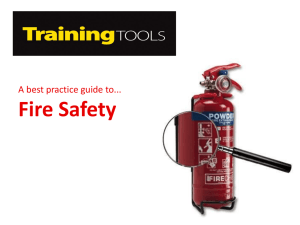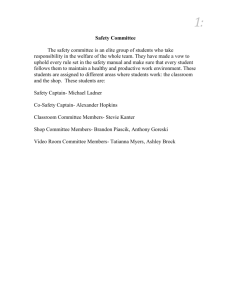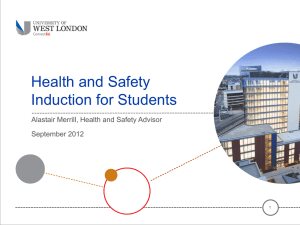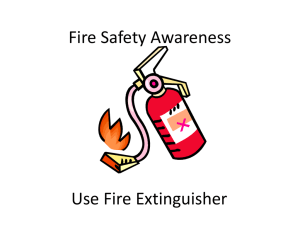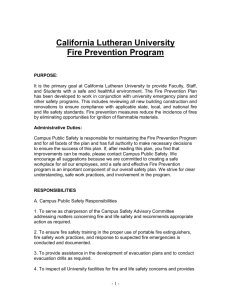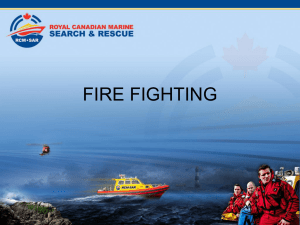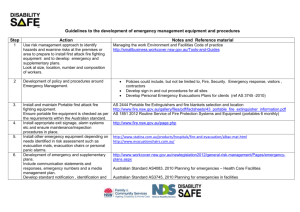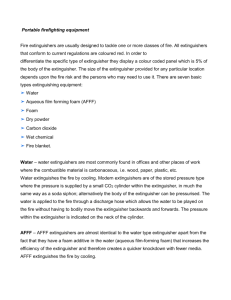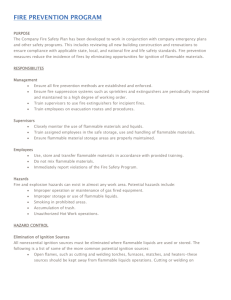Introductory fire safety instructions - IBR
advertisement
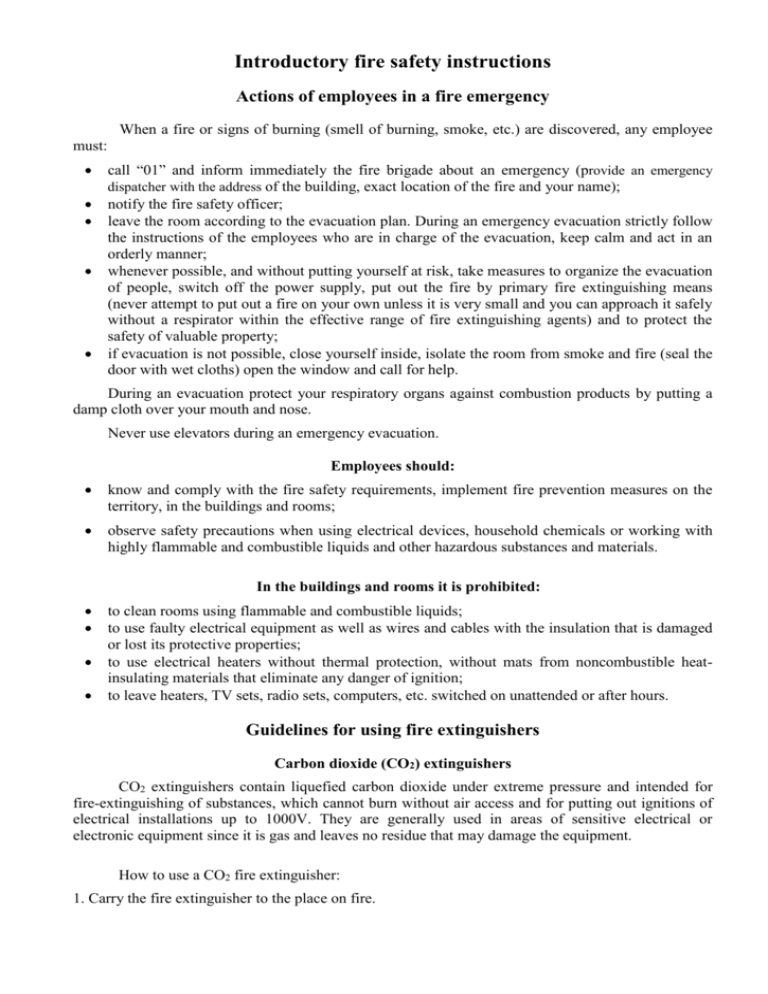
Introductory fire safety instructions Actions of employees in a fire emergency When a fire or signs of burning (smell of burning, smoke, etc.) are discovered, any employee must: call “01” and inform immediately the fire brigade about an emergency (provide an emergency dispatcher with the address of the building, exact location of the fire and your name); notify the fire safety officer; leave the room according to the evacuation plan. During an emergency evacuation strictly follow the instructions of the employees who are in charge of the evacuation, keep calm and act in an orderly manner; whenever possible, and without putting yourself at risk, take measures to organize the evacuation of people, switch off the power supply, put out the fire by primary fire extinguishing means (never attempt to put out a fire on your own unless it is very small and you can approach it safely without a respirator within the effective range of fire extinguishing agents) and to protect the safety of valuable property; if evacuation is not possible, close yourself inside, isolate the room from smoke and fire (seal the door with wet cloths) open the window and call for help. During an evacuation protect your respiratory organs against combustion products by putting a damp cloth over your mouth and nose. Never use elevators during an emergency evacuation. Employees should: know and comply with the fire safety requirements, implement fire prevention measures on the territory, in the buildings and rooms; observe safety precautions when using electrical devices, household chemicals or working with highly flammable and combustible liquids and other hazardous substances and materials. In the buildings and rooms it is prohibited: to clean rooms using flammable and combustible liquids; to use faulty electrical equipment as well as wires and cables with the insulation that is damaged or lost its protective properties; to use electrical heaters without thermal protection, without mats from noncombustible heatinsulating materials that eliminate any danger of ignition; to leave heaters, TV sets, radio sets, computers, etc. switched on unattended or after hours. Guidelines for using fire extinguishers Carbon dioxide (CO2) extinguishers CO2 extinguishers contain liquefied carbon dioxide under extreme pressure and intended for fire-extinguishing of substances, which cannot burn without air access and for putting out ignitions of electrical installations up to 1000V. They are generally used in areas of sensitive electrical or electronic equipment since it is gas and leaves no residue that may damage the equipment. How to use a CO2 fire extinguisher: 1. Carry the fire extinguisher to the place on fire. 2. Break the seal, pull out the pin, aim the nozzle at the base of the fire and squeeze the levers together to discharge the extinguishing agent. 3. While putting out a fire, hold it strictly in an upright position, do not turn upside down. Specific features and limitations: 1. CO2 extinguishers are ineffective at extinguishing fires involving substances that can burn without air access (alkaline metals). 2. The non-insulated horns freeze during discharge, so care must be taken not to touch it. If used incorrectly frost burns can occur. 3. Avoid exposure to direct sunlight and heating. 4. CO2 extinguishers must be weighed annually to determine the amount of contents remaining. Dry powder (DP) fire extinguishers DP fire extinguishers are filled with dry powder – a highly versatile medium for tackling most types of fires. Extremely effective on electrical hazards (appliances and devices up to 1000V), flammable liquids and gases, which makes this ideal for vehicle fires. How to use a DP fire extinguisher: 1. Carry the fire extinguisher to the place on fire. 2. Break the seal. 3. Press the starting lever and direct the nozzle at the fire. 4. Hold it strictly in an upright position, do not turn upside down. Rendering first aid to fire victims The most common injuries and traumas received at a fire are the poisoning with carbon monoxide or lighting gas, and burns of various degrees of severity. Some of the most common symptoms of poisoning may include a headache, dizziness, nausea, ear noise, chest pain, dry cough, blurry vision, skin redness, rapid or irregular heartbeat, drowsiness and loss of consciousness. First aid for poisoning emergencies: stop exposure to the gas; get fresh air immediately, spill cold water over the victim’s head, give him/her to inhale ammonia spirit fumes; in case of loss of consciousness and heart failure, perform artificial respiration and external cardiac massage; seek medical attention as soon as possible. The symptoms of burns are: reddening, skin swelling (first-degree burns); blisters with clear fluid (second-degree burns); white, blackened, or charred-looking skin, lack of feeling or a numbness of the affected area (third- and fourth-degree burns). First aid for burns: stop the burning process; remove all burned clothing (if clothing sticks to the skin, cool the material or cut or tear around the area to preserve good skin tissue); pour cool water over the burned area (never put ice or cold water on a burn); cover burns with a soft, clean, dry dressing, bandage or sheet (if possible, prior to bandaging the affected area may be treated with alcohol or potassium permanganate. Do not apply ointments, creams or salves to wounds.); cover the victim to keep him/her warm; seek medical attention as soon as possible.

